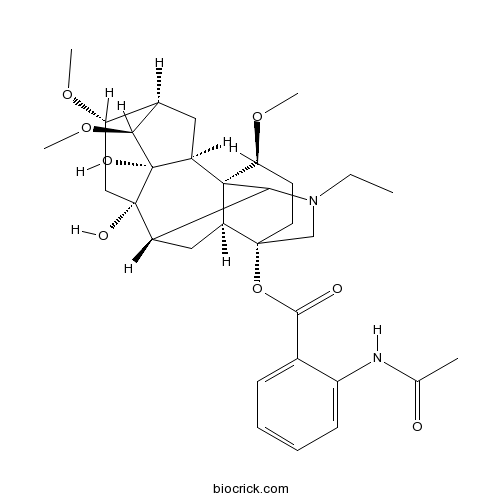Aconitum leucostomum
Aconitum leucostomum
1. The products in our compound library are selected from thousands of unique natural products; 2. It has the characteristics of diverse structure, diverse sources and wide coverage of activities; 3. Provide information on the activity of products from major journals, patents and research reports around the world, providing theoretical direction and research basis for further research and screening; 4. Free combination according to the type, source, target and disease of natural product; 5. The compound powder is placed in a covered tube and then discharged into a 10 x 10 cryostat; 6. Transport in ice pack or dry ice pack. Please store it at -20 °C as soon as possible after receiving the product, and use it as soon as possible after opening.
Natural products/compounds from Aconitum leucostomum
- Cat.No. Product Name CAS Number COA
-
BCN2504
Lannaconitine32854-75-4
Instructions

Assessment of in vitro cardiotoxicity of extract fractions and diterpene alkaloids from Aconitum leucostomum Worosch: A short communication.[Pubmed: 28104561]
None
[ISSR analysis for genetic polymorphism of Aconitum leucostomum from different habitats].[Pubmed: 25090698]
To investigate the genetic diversities and variations of Aconitum leucostomum,and to supply essential characteristics for identifying Aconitum crude drugs.
Cladosporium cladosporioides XJ-AC03, an aconitine-producing endophytic fungus isolated from Aconitum leucostomum.[Pubmed: 23269506]
The endophytic fungus XJ-AC03, which was isolated from the healthy roots of Aconitum leucostomum, produced aconitine when grown in potato dextrose agar (PDA) medium. The presence of aconitine was confirmed by the chromatographic and spectroscopic analyses. The yield of aconitine was recorded as 236.4 μg/g by high performance liquid chromatography (HPLC). The mass spectrometry was shown to be identical to authentic aconitine. Further analysis with nuclear magnetic resonance (NMR) spectroscopy to show the chemical structure of the fungal aconitine indicated that the fungal aconitine produced an NMR spectrum identical to that of authentic aconitine. Strain XJ-AC03 was identified as Cladosporium cladosporioides by its characteristic culture morphology and ITS rDNA sequence analysis.


